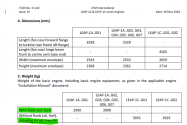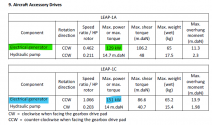a little update from me on the C919 project.
They are already ad 9 to 10 hour block time for some of these aircraft. That's quite regular
Second mover advantage? Learnt from China Eastern?
a little update from me on the C919 project.
They are already ad 9 to 10 hour block time for some of these aircraft. That's quite regular
Don't know what you mean by the weight difference and quick enough. Are you suggesting that the weight difference is significant enough for more integration and certification job when CJ1000A is ready?From what I read the CFM engines used currently by C919 weigh about a tonne more than the CFM engines on 737 Max and/or A320neo. CJ1000A cannot come quick enough for COMAC.

Absolutely correct. 1C weight here includes not only thrust reverser, but also this:If everything related is put together, there may not be a difference.

Just look at the debate before your post. The thing is we simply do not know. Not when we do not have decent numbers measured by the same yardstick to compare both.I have 2 questions about C919
Is that true that the CFM 1C is inferior to other 2 varients of CFM ?
You think so because the thrust figures quoted by wiki? I have said that the weight figures are misleading. The thrust figures on wiki are also misleading according to the EASA document. The bottom line is that all of them are the SAME engine with different adaptations for different demands, they are not one version improved over the other, therefor no one is better than the other.1) Is that true that the CFM 1C is inferior to other 2 varients of CFM ?


EASA certification is not for export to Europe, but to increase the credibility to Global south countries. Let's say you are trying to sell to Saudi Arabia. Would you not want EASA certificate? After all, Saudis cannot fully replace 737s in their fleet unless C919s are allowed to fly into Europe. There is also just the overall reputation effect of having EASA certificate.IMHO China shouldn't waste too much time with EASA certification. It is fine if they get it, but much better would be to establish the credentials of its own certification authority and improve relations between it and other Global South countries.
